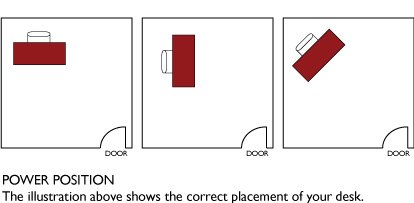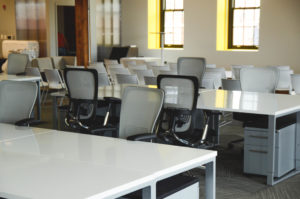Restaurants are rarely need to move. In fact, the measure of a restaurant could be whether it has become an institution in its current location. Tacconelli’s Pizzeria in Philadelphia has been in the same spot since the 1920s and is still so popular that customers have to call ahead to reserve pizza dough. Tune In, a local favorite in Washington, D.C, has sat in the same spot on Capitol Hill since 1947. And, J.J. Foley’s Cafe in Boston has been a city-wide favorite for Irish pub food since 1909.
Clearly, moving usually isn’t a hallmark of the most successful restaurants. However, there is still a lot that a professional moving company can do for your restaurant. Here are just a few:
Updating Interiors
Old, cracked vinyl diner booths still hold just as much charm today as they did in 1950. However, not all old restaurant furniture can say the same. If you need to ditch your worn tables and chairs, a professional moving company can be very helpful. If you plan on getting rid of larger items like stoves, bars, large dining tables, and appliances, a professional moving company becomes crucial.
So, you’re getting rid of old furniture, what are you going to do with it? Common practice would be to just throw it out, but using a professional moving company means you might have other choices. Furniture is an under-looked but highly sought after donation to non-profit organizations looking to furnish public spaces. A professional moving company can remove unwanted furniture from your restaurant and then store it and transport it to those in need.
Installing New Interiors
Just as your old furniture in going out the door, new furniture is coming in. In that flurry of activity, you might realize that your restaurant lacks the space to accommodate a delivery of that size. Not to worry! A moving company like Olympia has the storage capacity to receive large deliveries and then delivery and install your new furniture or equipment in your restaurant.

Seasonal Furniture/Patio Furniture Storage
The same applies to patio furniture. It’s not likely to fit in the supply closet nor should it stay out to face the elements year-round. Olympia has provided many restaurants with winter storage for their patio furniture, with disassembly and reassembly included. Your furniture can be picked up at the first sign of frost and returned when spring has sprung.
Fire or Flood
Tragically, it’s not always a good thing when furniture needs to be moved. If your restaurant has experienced a fire or a flood and needs space to make repairs, a moving company can be on hand for removal and delivery to repair professionals or storage. Or, in the worst case scenario, they can be called on to junk ruined furniture so you can focus on fixing what survived.
Restaurant Logistics for Large Catering Events
If your restaurant is catering its own event, a professional moving company can help you handle time-consuming logistics. You and your staff need to focus on providing delicious food, so hiring a professional moving company relieves pressure.
For more information on outdoor events for your business, read some of Olympia’s best tips.
Moving In or Moving Around
A professional moving company can help a restaurant at all stages of life. If you are opening a restaurant, hire a moving company to take over furniture delivery and set up, allowing you to focus on all the other factors of a grand opening. And, after huge success leads to multiple locations, a moving company can transport large equipment like ovens or freezers between locations if a shuffle is required.

With just these six examples, its clear a professional moving company can do a lot to help restaurants of all sizes. Olympia Office Movers is proud to work with a range of restaurants in Greater Boston, Washington DC, Austin and Philadelphia. If you have a similar job or something totally unique to your business, it’s important to find a moving company that works for what you want.












 Once you have established a work environment that allows you to be productive, reach goals and enjoy every minute of it, you can then begin expanding Feng Shui techniques into other areas of your life.
Once you have established a work environment that allows you to be productive, reach goals and enjoy every minute of it, you can then begin expanding Feng Shui techniques into other areas of your life.


 WeWork builds their spaces around their shared kitchens, creating a place where people can interact and share ideas. Their mission is to build communities, not offices, and with locations worldwide they show no sign of slowing down. Focused on building a larger community, WeWork has created a place where members can connect with potential clients and business partners from around the world to build better businesses. With the use of a digital app to address frictions, WeWork seems to have found a way to make business solutions easier for the community as a whole, mapping what members need and delivering accordingly.
WeWork builds their spaces around their shared kitchens, creating a place where people can interact and share ideas. Their mission is to build communities, not offices, and with locations worldwide they show no sign of slowing down. Focused on building a larger community, WeWork has created a place where members can connect with potential clients and business partners from around the world to build better businesses. With the use of a digital app to address frictions, WeWork seems to have found a way to make business solutions easier for the community as a whole, mapping what members need and delivering accordingly.